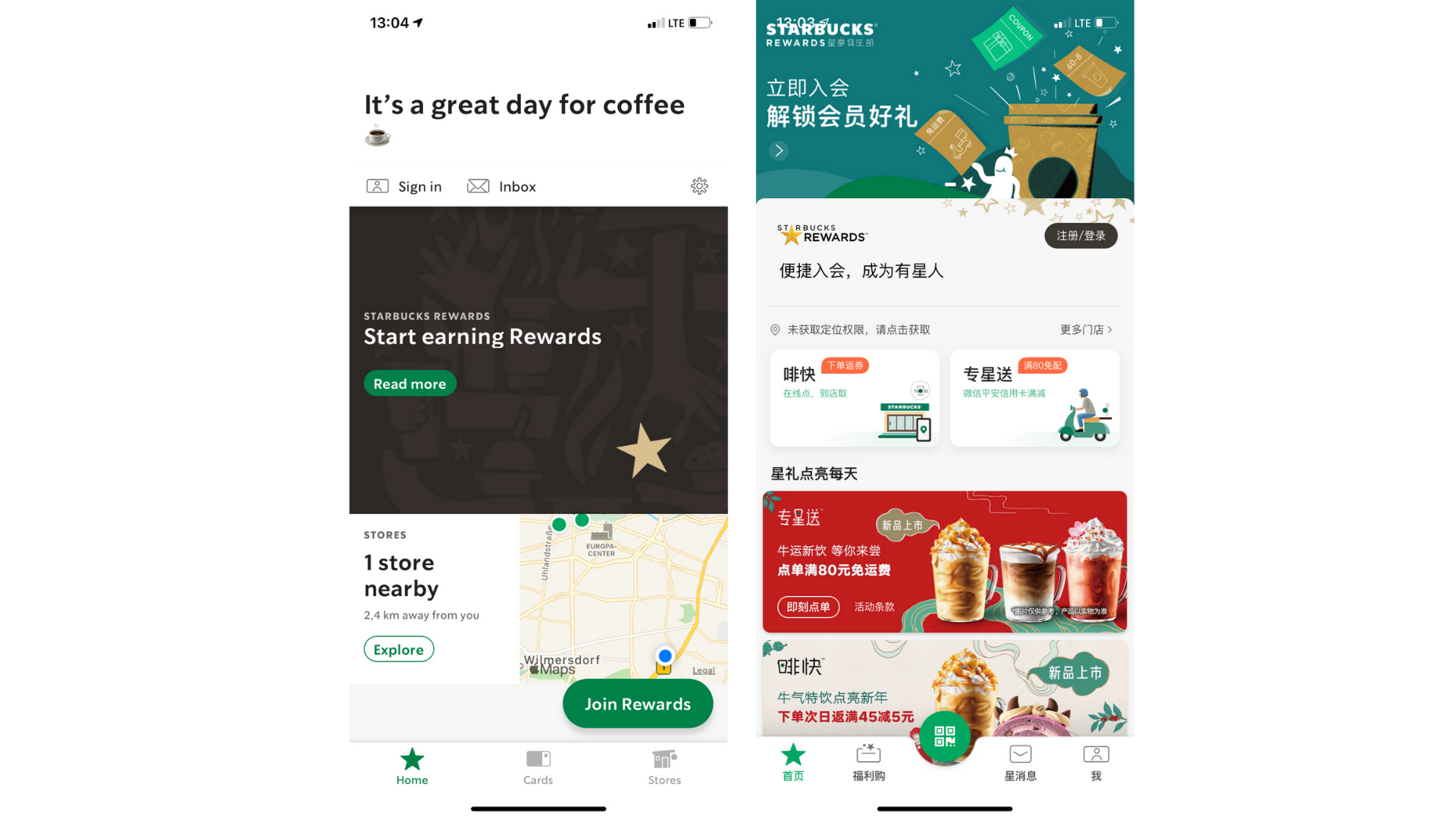Looking at different aspects of Chinese history, culture and the typical user, it becomes clear why UX design between China and the West is different. Not one approach is better than the other; it all depends on the context and the end user's preferences. It is certainly interesting to look at some of the key differences and where they come from, so let's dive in!
About the author
My name is Yang Zhong, and I am originally from China, but I completed a master's degree in ‘Digital Media’ in Germany in 2015 and am now working as Lead UX Designer at Ergosign in Berlin. So for this comparison, I can combine my experience in UX Design with my upbringing.
Written Language
To the untrained eye, the Chinese language may appear dense and complex. This is because the Chinese language is logogrammatic and based on written characters. These characters are rectangular and consist of strokes. The number of strokes within each character can vary between one to more than one hundred - yet the character size remains the same.
English or German usually require more space to provide the same information, and while Chinese may look denser, it is more efficient when it comes to space usage. This gives designers more possibilities concerning layout options. The results are interfaces that may appear chaotic or too full to a non-native speaker but different to Chinese, whose brains are trained to scan through complex content efficiently.
Different developments:
1 Design history
Chinese history developed differently from Western civilization and did not go through the Second Industrial Revolution or experience the Bauhaus period.
Eventually, this has led to a design approach combining Western photographic art and traditional Chinese drawing techniques. This decorative design remains very popular as people appreciate visual details. Global companies usually change the looks of their products to avoid them being perceived as dull by the Chinese market.
2 Economy and business perspectives
China is still developing and growing quickly. The country consists of both rural and agricultural areas as well as metropolises such as Shanghai and Beijing.
These are bustling and may appear overwhelming but also symbolize life, urbanity and wealth. It's similar to visual design, and just as the Chinese are great at navigating through busy streets, they are very skilled at navigating through the 'bold and loud' digital landscape, where eye-catching design increases the customer success rate.
This becomes even more important when considering the large population of 1.4 billion people. After all, a feature that may only be useful for 0.01% of the population will still attract 140,000 customers.
3 Technology and internet
Big tech companies such as Alibaba or Baidu made technology cheap and available to the average Chinese consumer. As such, people have developed their own preferences away from Western tech companies.
As reliable and fast internet spreads in China, millions of new users are being introduced to the internet every year. Product homepages often provide numerous features to attract and retain as many users as possible. An example of this would be WeChat. While it started as a chat tool, it has become a 'mega-app' providing digital payments, social networking, food delivery and more. WeChat currently has 1.12 billion active users every month. So rather than installing individual apps for different purposes, users navigate towards WeChat, which provides everything in one tool.
Is simplicity overrated?
Most people prefer products with more assets, functionality and versatility. Chinese UX Design reflects this difference and mindset. Complexity shows status, and 'more' correlates with value. An app full of features and buttons may make the product look good and appear more valuable to the East Asian market.
While the sleek and minimalistic design is often preferred in Western cultures; Chinese average users may perceive it as dull, and the product as less capable.
Summary
In this short and insightful article, we have only scratched the surface of differences between Chinese and Western designs and where they may stem from. Context and conventions between both are very different and have had a considerable impact, even centuries later. While globalization has influenced people's tastes and made them more uniform, it is impossible to develop a golden principle that can successfully be applied universally. Companies such as AirBnB might not have failed so hard upon market entry in China if they invested more in adapting their product for the local market.
„This brings us back to one of the principles of great UX design: you need to understand your user to design and develop a great product.“




